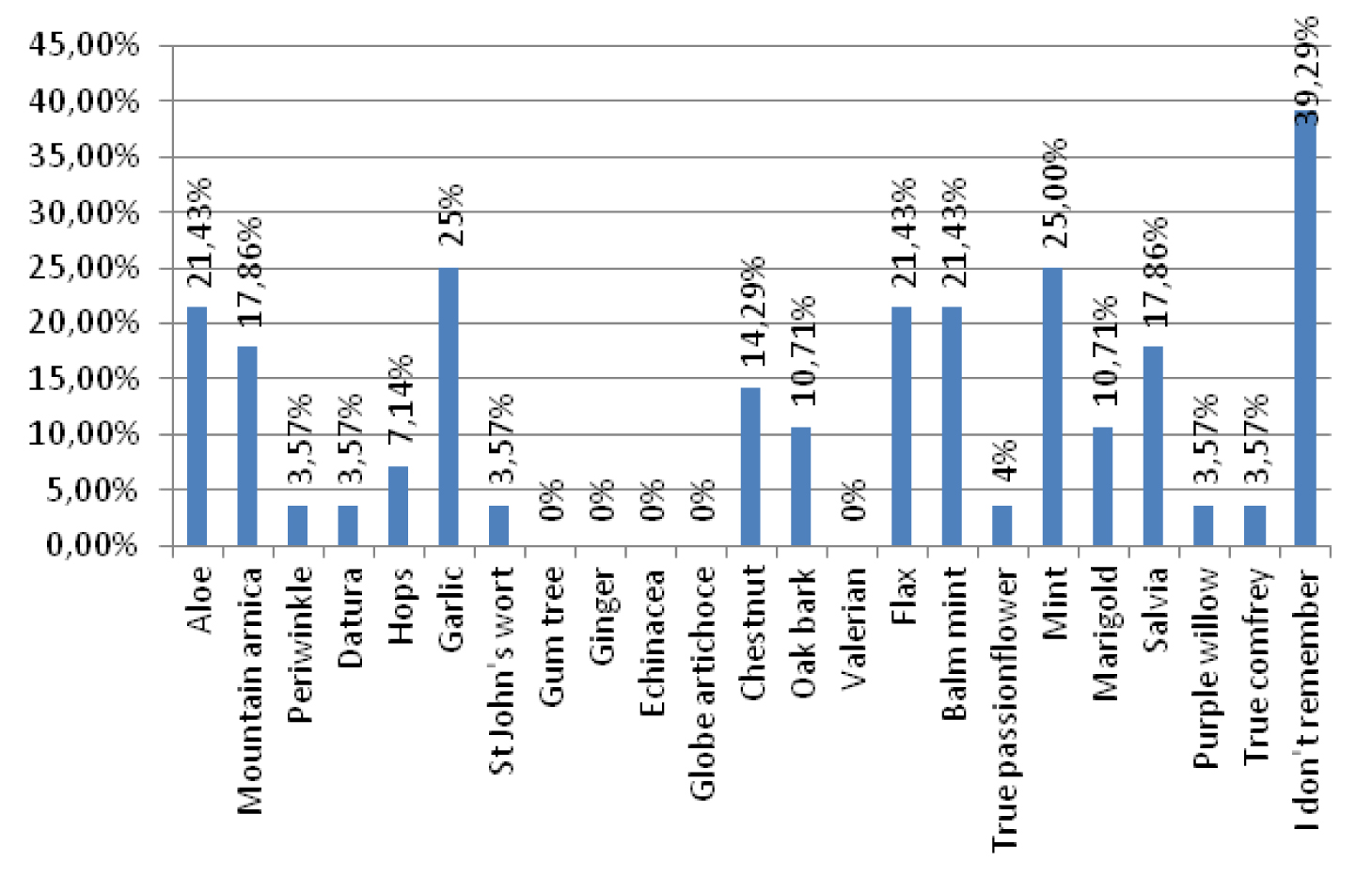The assessment of the level of knowledge and the use of plant-derived preparations among people reporting to the Rehabilitation Clinic in Lublin
Abstract
The use of plant-derived compounds in medicine arouses more and more interest. Most plants contain numerous active ingredients that may have therapeutic effects on the human body. For many years, herbs have been used as medicinal agents. However, it is necessary to learn about the chemical content of the plant as well as how they work on the human body.
The aim of this study was to evaluate the use of preparations containing plant extracts and the assessment of respondents’ knowledge about plant resources with medicinal properties.
The study group consisted of people who visited the Rehabilitation Department in Lublin. Respondents voluntarily filled out the questionnaire consisting of 21 questions. 33 persons were examined in total.
More than 77% of those who participated in the study have ever applied preparations of plant origin. More than half rated their level of knowledge about medicinal plants as small. Respondents gained knowledge about data on herbs and herbal supplements from several sources. None of the respondents considers preparations containing plant extracts as fully safe for the body and no one would use it without consulting a doctor first. The majority of respondents (over 63%) rated the effectiveness of the plant-derived compounds as good. Over 90% of respondents noticed positive effects of the use of plant supplements. Most respondents did not use compounds of plant origin which might slow down the body’s aging process or improve memory and concentration. However, more than half of the respondents applied preparations containing sedative plant extracts.
As seen in the studies and the discussion above, the prevalence of the use of plant-derived compounds among respondents is relatively large. Respondents do not have sufficient knowledge of these substances. Almost all respondents notice the positive impact of plant compounds on the body. There is a need for educational campaigns among society to enrich the knowledge on the use of herbal medicine and its side effects in details.
References
Drozd J. 2012. Phytotherapy – yesterday and today. Overview of the Medical University of Rzeszow and the National Medicines Institute in Warsaw 2: 245–251
Ekor M. 2013. The growing use of herbal medicines: issues relating to adverse reactions and challenges in monitoring safety. Front. Pharmacol. 4: 177. doi: 10.3389/fphar.2013.00177
Goh L.Y., Vitry A.I., Semple S.J., Esterman A., Luszcz M.A. 2009. Self-medication with over-the-counter drugs and complementary medications in South Australia’s elderly population. BMC Complement. Altern. Med. 9: 42.
Ożarowski A., Jaroniewski W. 1987. Medicinal plants and their medical use. Publishing Institute Trade Unions Warsaw.
Scarton L.A., Del Fiol G., Treitler-Zeng Q. 2013. Completeness, accuracy, and presentation of information on interactions between prescription drugs and alternative medicines: an internet review. Stud. Health Technol. Inform. 192: 841–845.
Werner 2014. Patient safety and the widespread use of herbs and supplements. Front. Pharmacol. 5: 142. doi: 10.3389/fphar.2014.00142


This work is licensed under a Creative Commons Attribution-NonCommercial-NoDerivatives 4.0 International License.
The journal is licensed by Creative Commons under BY-NC-ND license. You are welcome and free to share (copy and redistribute the material in any medium or format) all the published materials. You may not use the material for commercial purposes. You must give appropriate credit to all published materials.
The journal allow the author(s) to hold the copyrights and to retain publishing rights without any restrictions. This is also indicated at the bottom of each article.





